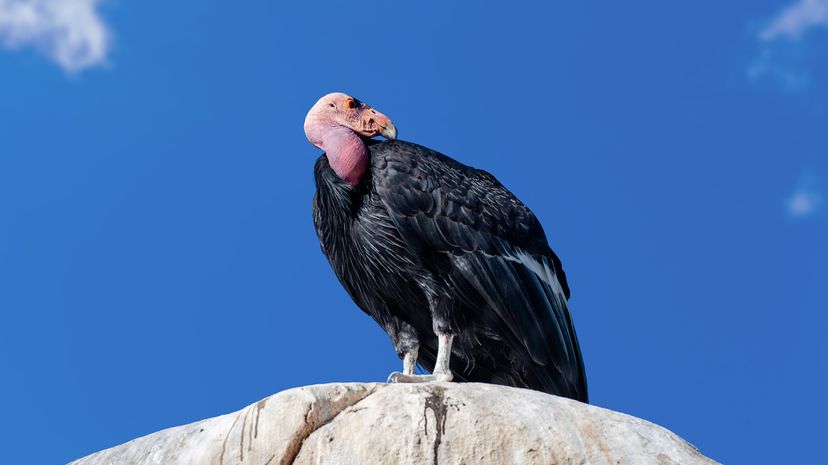
The California condor has an amazing conservation story, but it's still under threat. Learn more about this uniquely North American bird.
Advertisement

The California condor has an amazing conservation story, but it's still under threat. Learn more about this uniquely North American bird.
Advertisement
The California condor (Gymnogyps californianus) is one of the largest flying birds in the world and the largest land bird in North America. Adult condors weigh 18 to 22 pounds (8.5 to 10 kilograms) and have a wingspan of 9.5 feet (2.8 meters).
Like other vultures, California condors have featherless heads and necks and eat carrion (decaying animal carcasses).
Advertisement
California condors flap their wings as little as possible to conserve energy. They can glide for hours at high altitudes and use their keen eyesight to spot food. Adult California condors make their nests on steep cliffs and in large trees.
The California condor's historical range stretched all the way to Florida in the east and western Canada in the north.
There are currently three active release sites in California, one in Arizona and one in Baja California, Mexico. The wild California condor populations are:
Advertisement
The California condor is a critically endangered species on the IUCN Red List. Despite their rarity, California condors are somewhat of a conservation success story.
Once abundant in North America, by the 1980s, condor populations were close to extinction. In 1987, the last six remaining wild condors were placed in a captive breeding program.
Advertisement
The U.S. Fish and Wildlife Service (USFWS) began reintroducing California condors into the wild in 1992. By August 2003, there were 138 California condors in captivity and 85 reintroduced in California and northern Arizona.
The USFWS leads the California Condor Recovery Program with partners including the California Department of Fish and Wildlife, the Los Angeles Zoo, the National Park Service, the Oregon Zoo, the Peregrine Fund, the San Diego Zoo and the Santa Barbara Zoo.
The combined total wild population of California condors as of 2022 stands at 347 with an additional 214 captive individuals, for a total world population of 561. You can find details about individual condors at condorspotter.com.
Lead contamination is the greatest threat to the critically endangered California condor due to the use of lead ammunition in the condor's range.
California condors eat decaying carcasses of animals like deer and cattle, and while their specialized digestive systems allow them to safely eliminate toxins like anthrax, botulism and cholera, they can die of lead poisoning, the number-one cause of condor deaths.
Advertisement
Please copy/paste the following text to properly cite this HowStuffWorks.com article:
Advertisement